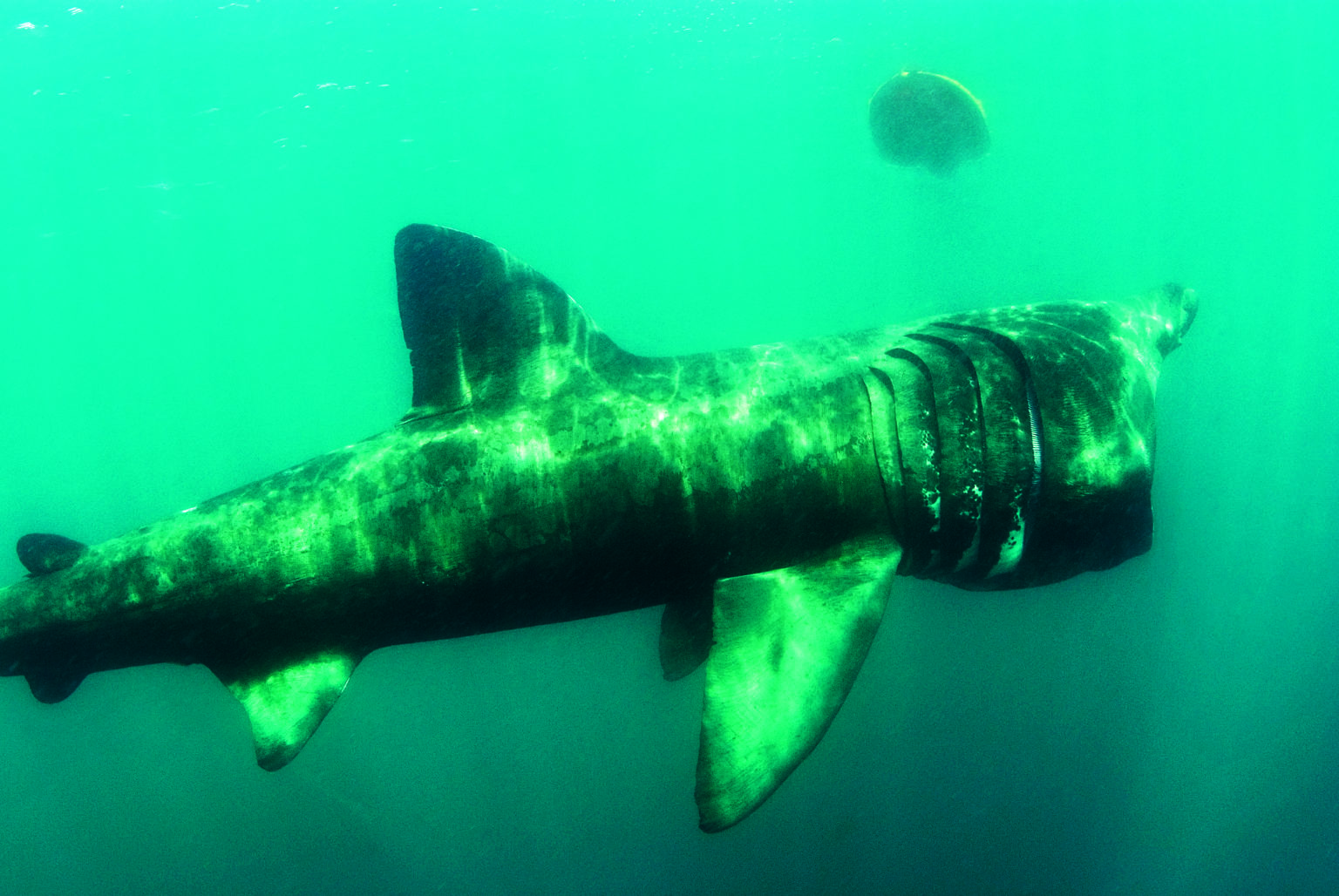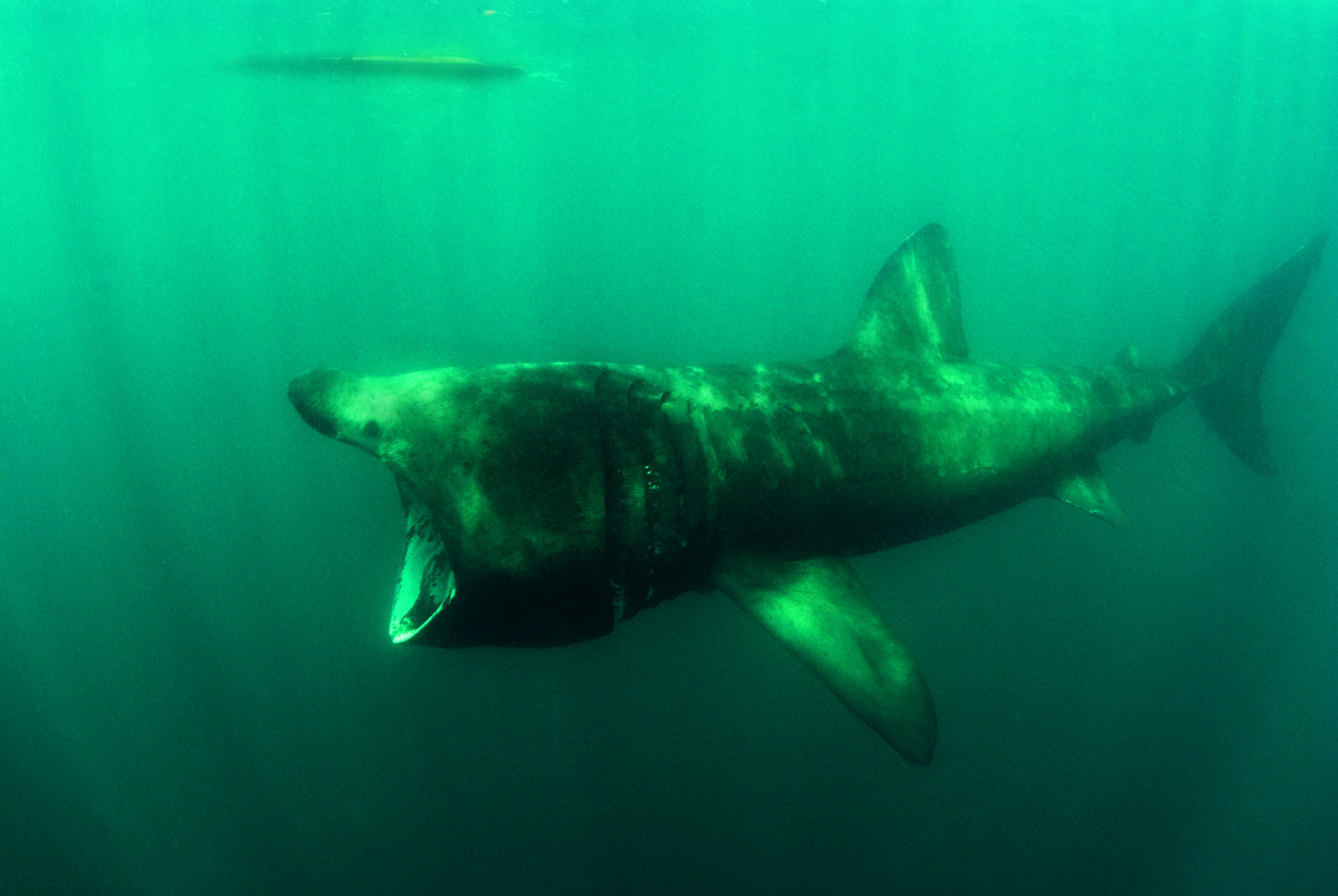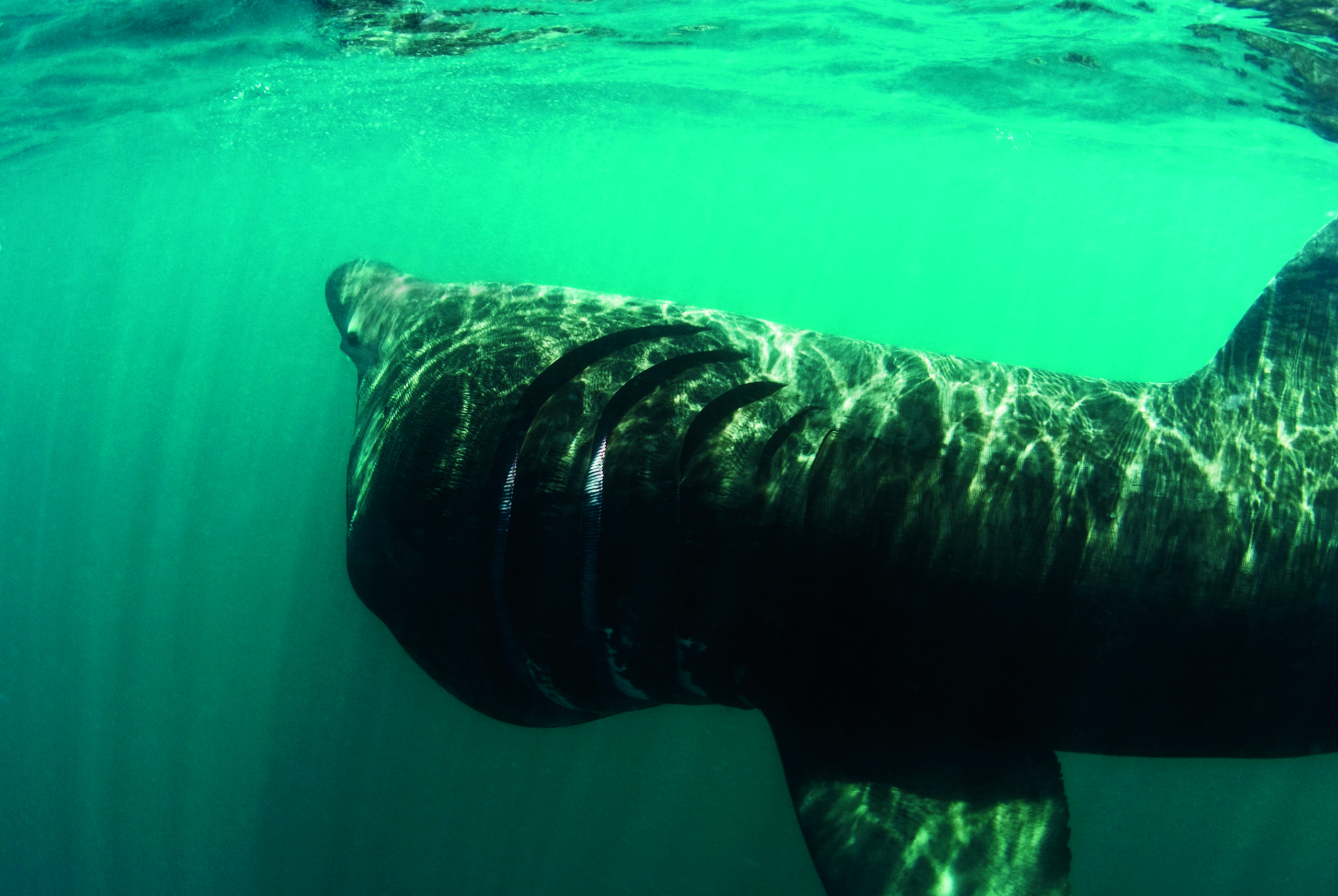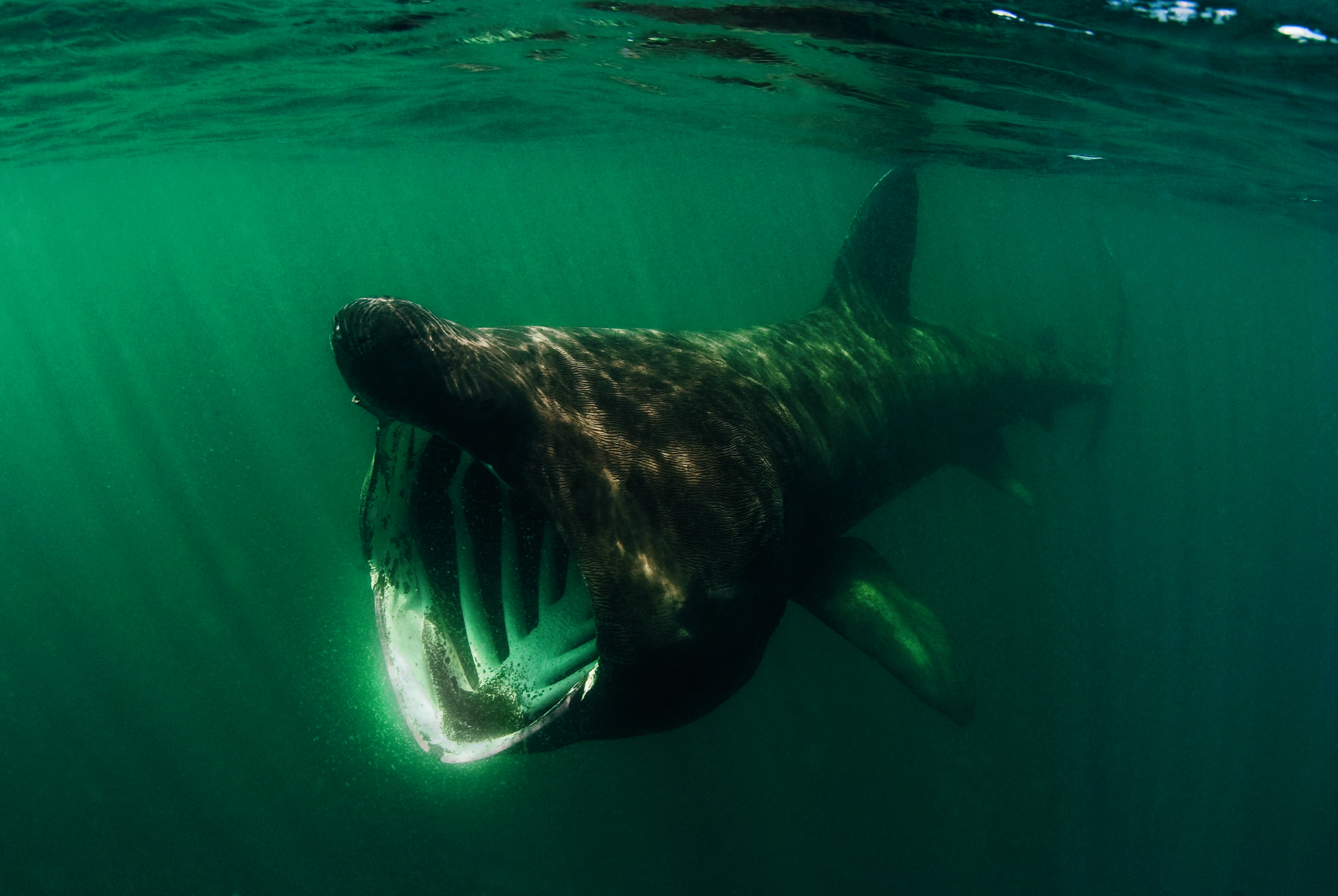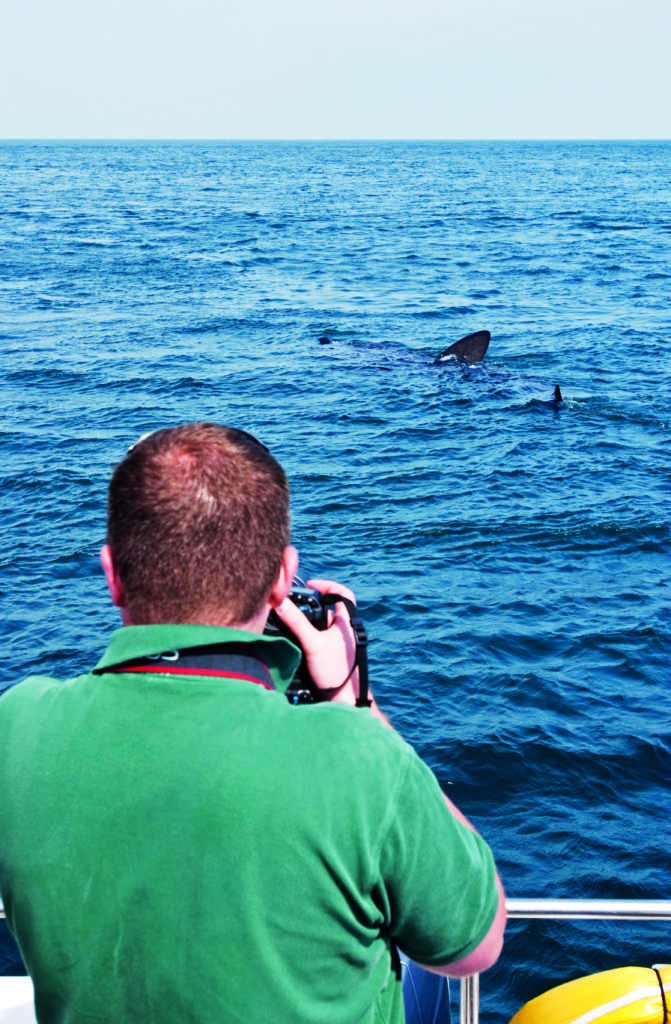Basking sharks are the second-largest fish in the oceans, and they visit our native waters annually. Stuart Philpott was on a mission to encounter his first-ever basking shark off Cornwall
This had become a classic ‘Thunderbirds are go’ moment. On receiving the green light from Sarah, at Porthkerris dive centre, late Thursday afternoon, I packed my bags, prepared my cameras, grabbed a few hours’ sleep and by dawn Friday the pink Rolls was speeding west into deepest darkest Cornwall – F.A.B. (Well, maybe not in a pink Rolls, but I was on my way!).
Sarah’s email basically said ‘we have multiple shark sightings. Get your hairy arse down here ASAP’. There was no time to waste. After more than a year of anticipation, Operation Nab the Basking Shark had begun.
As I drove over the headland on my way down to the dive centre, I briefly stopped to assess the weather. Could this be for real? The conditions were absolutely perfect for basking sharks; a clear blue sky, light breeze and calm water.
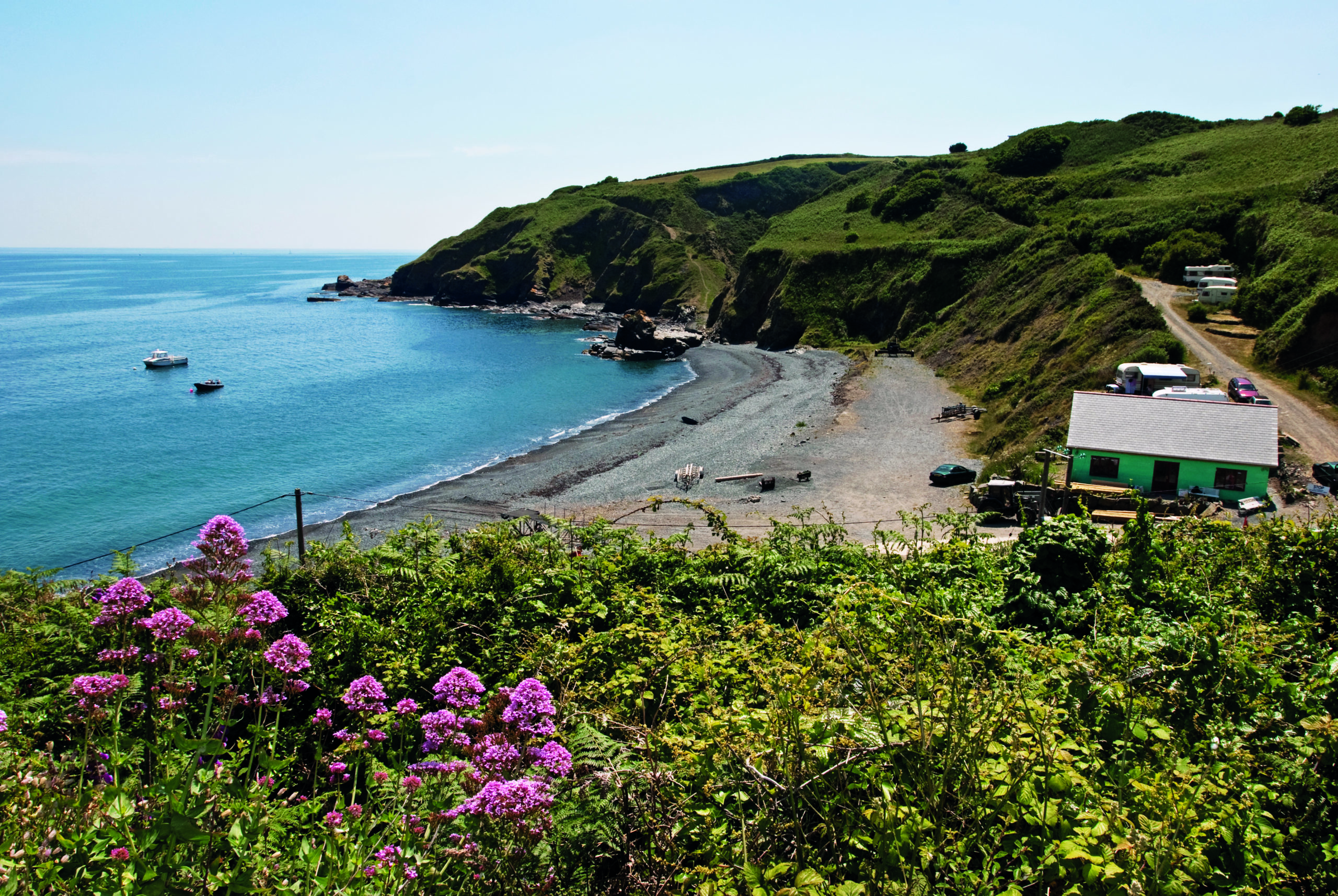
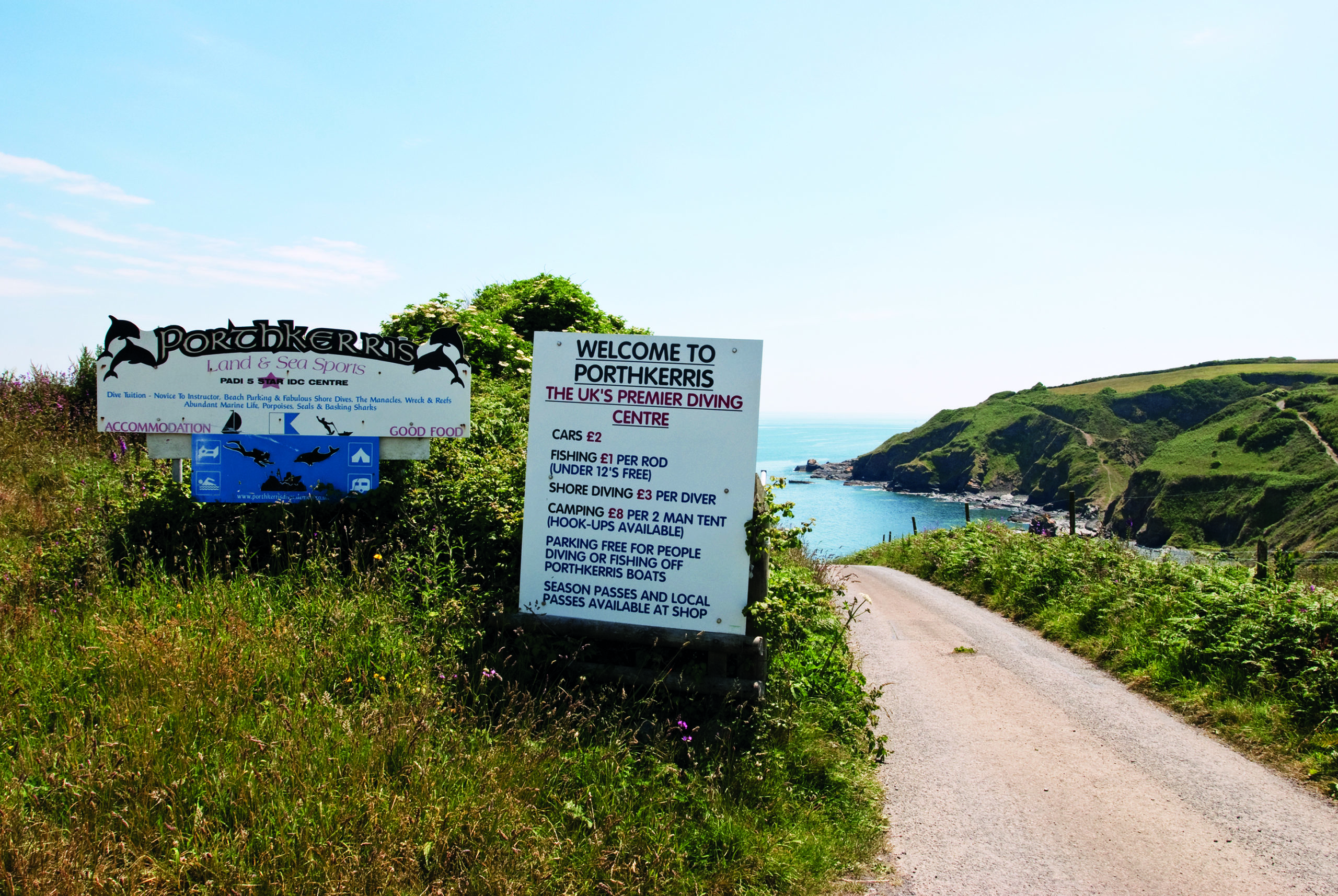
Mike Anselmi, the owner/manager, said: “There’s no point going out in waves bigger than 30cm-40cm because the sharks tend to drop down and feed deeper below the surface”. Which means it’s almost impossible to spot the dorsal and tail fins.
Mike’s smaller dive boat, the 8.5m long Keltic Kitten, had taken a group out on Thursday and encountered five different sharks, which had spurned Sarah’s hasty email. They even had time to jump in the water and snorkel with the sharks.
Sarah taunted me with some of the GoPro footage. One of the sharks had stayed around for a good 20 minutes and was not at all bothered by the boat engines or the snorkellers. Mike said: “If you bring the boat up slowly behind them you can get really close.
They don’t know you are there as most of their sensors are facing forward”. All of Mike’s boat skippers are WISE accredited, which is a Wildlife Trust awareness scheme aimed at protecting marine life.
Basking shark sightings become more frequent around late-April time through to late-June, but this can vary from year to year. Mike explained that the sharks congregate off Land’s End and then split up. Some go east, as far up the coast as Southampton and the Isle of Wight, while others go north towards Ireland.
He thinks they come up from the Continental Shelf to feed and then drop back out of sight again a few months later. During the previous year, there hadn’t been many shark sightings at all. Mike said: “The water temperature seems to drastically affect their activity. It has to be 13 degrees C”.
He explained that they will literally appear overnight and then disappear again if the temperature level falls or rises. They normally turn up on the second plankton cycle, Mike said: “First you see the mackerel shoals during the first cycle and then the sharks appear two weeks later”.
Eight-metre-long individuals used to be quite common, but in recent years they have only been seeing smaller sharks between three to five metres in length. He thinks this could be due to the bigger sharks getting caught in ghost nets or being tangled up in discarded ropes.
Basking sharks are a 100 percent protected species in UK waters. The IUCN Red list classes them as ‘vulnerable’ bordering on ‘endangered’. Mike recalls seeing his first-ever shark back in 1993 which was more than ten metres long. Mike said he could accurately gauge the length because it was twice the size of his RIB.
This reminded me of a line from the old Jaws movie when Police Chief Brody says ‘we’re gonna need a bigger boat’. Thankfully, plankton-feeding basking sharks don’t have the same reputation as great whites!
Mike said he will only arrange a trip if there is at least a 70 percent chance of seeing a basking shark. He said: “My staff hate doing the trips. They don’t like to disappoint people if we don’t see any sharks”. This is a total contrast to some of the dive centres I have visited around the world who charge punters US$200 per person for a whaleshark trip knowing a sighting is highly unlikely.
And then exploit the same amount of money from the same people for the next four days running. Porthkerris Dive Centre normally go out around 2pm in the afternoon and return around 4pm, but this depends on the basking sharks and how they are ‘playing’. Mike said: “If we see a shark and it stays around, we will stick with it”.
It’s at the skipper’s discretion whether people are allowed to get in the water and snorkel with the sharks.
When I arrived, Sarah told me they had already seen one big shark circling right outside the dive centre window. Could this be a bad omen for me? I usually find that Sod’s Law comes into play when someone tempts fate in this way. We climbed aboard Mike’s bigger boat, the 12-metre-long Keltic Cat. Its high wheelhouse gave us a much-better vantage point for basking shark spotting.
Mike had already contacted the local fishermen and they had seen three sharks feeding on either side of the current line. Mike explained that the current lines are basically thermo lines where an upwelling of cooler water brings the plankton closer to the surface. This is the perfect place to find sharks feeding.
We cruised along the current line for a good few miles scanning for fins breaking the surface. We had a few false alarms in the guise of black marker buoy flags and mating cormorants, but alas no sharks were to be seen.
After an hour of eye-numbing searching, I was starting to get concerned. Maybe Sarah really had put the mockers on my day! We travelled all the way to the Lizard, the UK’s most-southerly point, and had not got one whiff of a basking shark.
But Mike had one last trick up his sleeve; we made a heading for Kennock Bay, which is about eight miles from the dive centre. Mike described the picturesque bay as a ‘holding area’ which was unaffected by fast-moving currents.
Within moments of arriving we clocked two sharks. Judging by the distance between dorsal and tail fins, they must have been at least five metres in length, maybe slightly bigger. I also caught sight of two smaller three-and-a-half-metre sharks; all were congregating in the same area. As I watched the sharks feeding, they showed some distinct similarity to great whites. I could now understand why the two species are sometimes mistaken.
Mike said: “Normally if you find one shark there will be three or four others following, they are quite social animals”.
On this occasion, I wasn’t going to be content with a nicely composed picture of a basking shark. I wanted to go one step beyond and get a close-up dramatic-looking open-mouth shot using my 16mm fisheye lens.
But it didn’t matter about the size of my fins or the strength of my leg muscles, there was just no way of staying alongside a hungry basking shark (they normally move at around two knots when feeding).
So Mike had devised a cunning attack strategy. If I was pulled behind a surf ski/canoe, they could manoeuvre me right into the jaws of an oncoming shark. This would at least give me a fighting chance for an action picture.
Mike first let the sharks get used to the boat engines and then he moved in closer. I jumped into the water and Darren towed me into position using the yum-yum yellow-coloured surf ski. I could see a large triangular dorsal fin heading in my direction.
This was a little disconcerting to say the least. Even though I knew it was a harmless plankton feeder, I couldn’t help but think, what if this one’s a meat eater instead of a veggie? Basking sharks do actually have teeth.
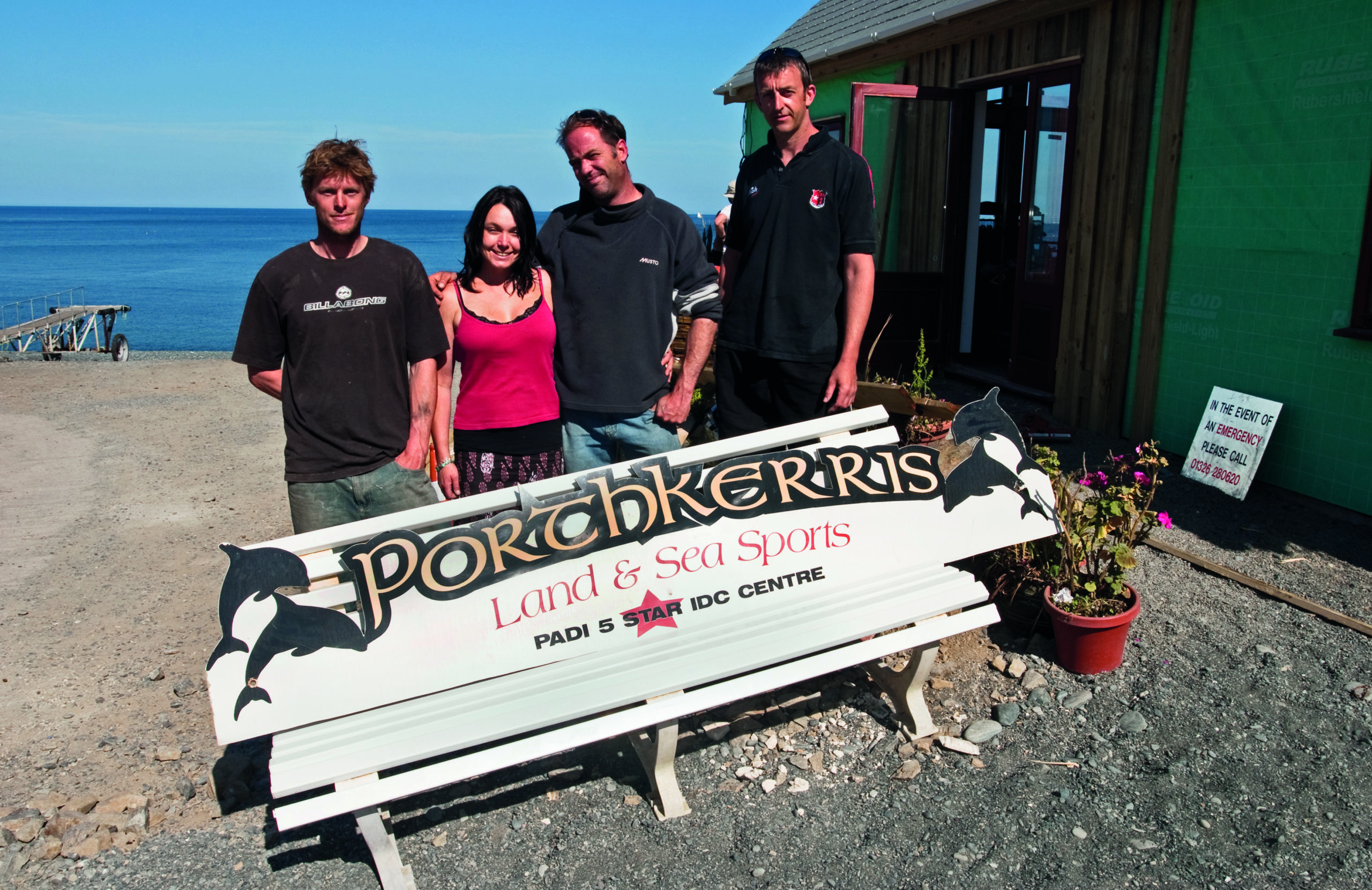
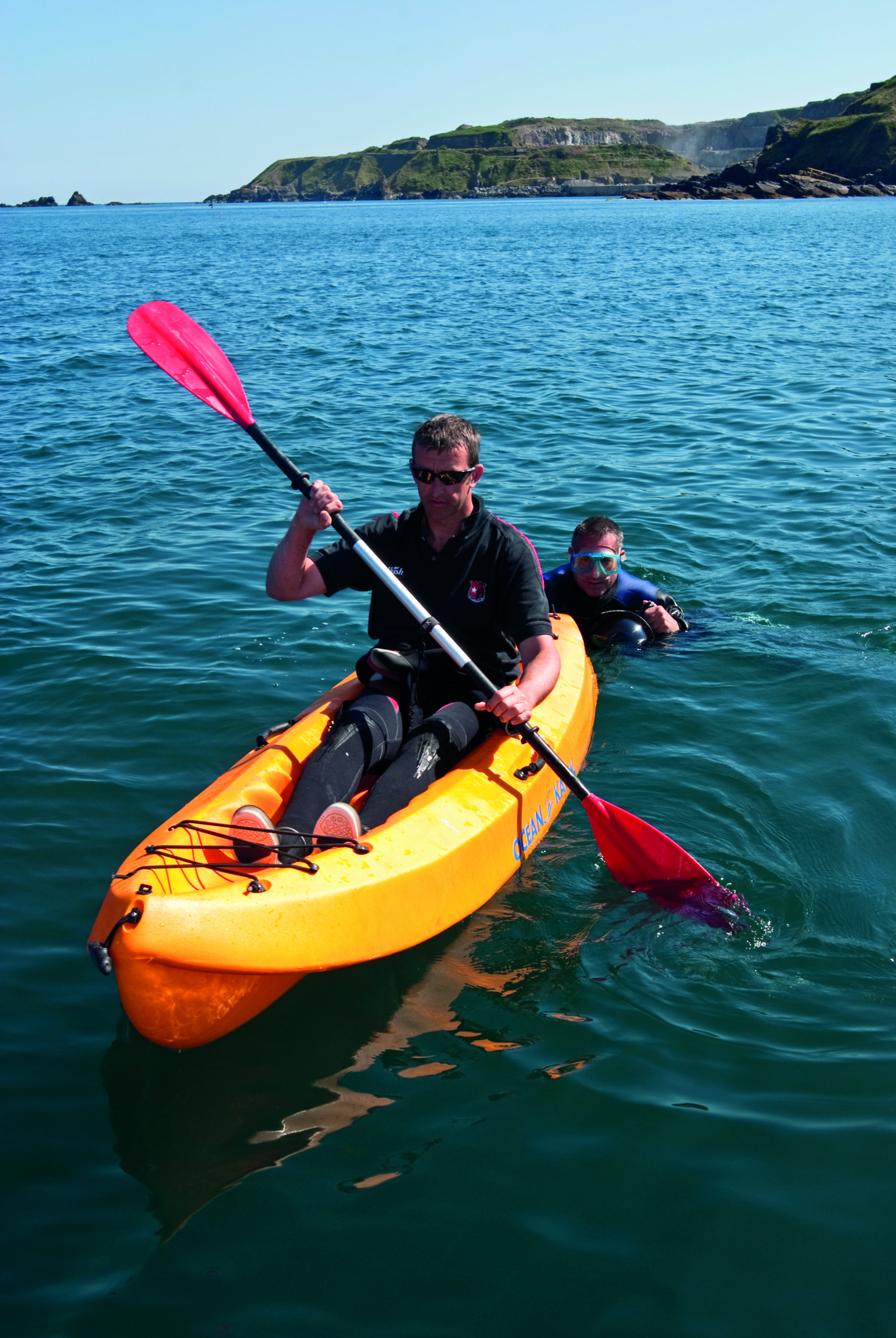
They are only 5mm-6mm long, but nonetheless. Mike was shouting out directions from his vantage point on the bridge, he said: “Go left a little, now swim towards the boat.
Okay, the shark is heading straight for you, you can’t miss it”. I dunked my head underwater and scanned the emerald green water ahead of me. On the day, visibility was around five metres. For a few seconds, I could see nothing but a few passing mullet and then a round white patch appeared in front of me.
This materialised into a giant gaping mouth. I ducked dived for a closer look, but this just made the shark veer away and close its mouth. It circled me for a few minutes and then came in and nudged my camera dome. I couldn’t have got much closer than that, what an adrenalin rush!
I spent the next hour and a half being towed and shouted at. I even took some pictures of two good-sized sharks. I realised that looking at basking sharks from the surface is similar to an iceberg. All I could see was the dorsal and tail fin moving towards me, but underwater I experienced the full bulk of the creature, including on occasions a scary-looking wide gaping mouth.
The shark kept circling gulping up plankton. I could see the bulging semi-circular gill slits as it passed right by me. They didn’t seem at all harassed by my presence and as long as I didn’t try and get too close, the sharks would just carry on feeding.
I wanted to get a picture of Darren either swimming or paddling next to a shark, just to show some size perspective, but this proved to be difficult. The low visibility and trying to manoeuvre Darren into a good enough position was near-on impossible.
But I wasn’t complaining, I had just had a one-to-one experience with the second-largest living fish in the ocean (the whaleshark is number one). Our timing had been perfect. Mike said I had been able to get really close because there was a lack of plankton and the sharks were more intent on feeding than worrying about me.
On the way back to the dive centre, we saw a large splash followed by a giant shape leaping out of the water. I had seen whales and great white sharks breaching, but never expected basking sharks to do the same.
A small three-and-a-half-metre shark put on a spectacular aerial display while we were following behind in the boat. Mike said he had only seen this when the sharks were following each other in single file. He thought it could be some kind of mating ritual. Another theory is that they are trying to get rid of parasites attached to their skin.
The only other time Mike had seen this behaviour was when the sharks were corralling mackerel closer together, forcing them to squeeze out their eggs. This creates a giant red egg slick on the surface for the sharks to eat.
For once I felt content. I had spent a great day at Porthkerris Dive Centre. Mike, Jo and the rest of the dive team had been extremely accommodating. I couldn’t even complain about the weather. Cornwall’s coastline was absolutely spectacular and I had even got to see the sharks close up and personal.
It really was an amazing experience to see such a big shark in, of all places, my home UK waters. As I sat outside the dive centre drinking a cup of tea, I felt satisfied that my day couldn’t have gone much better. Not bad for my very first encounter with basking sharks.
It circled me for a few minutes and then came in and nudged my camera dome. I couldn’t have got much closer than that, what an adrenalin rush!
I had seen whales and great white sharks breaching, but never expected basking sharks to do the same
Photographs by Stuart Philpott
